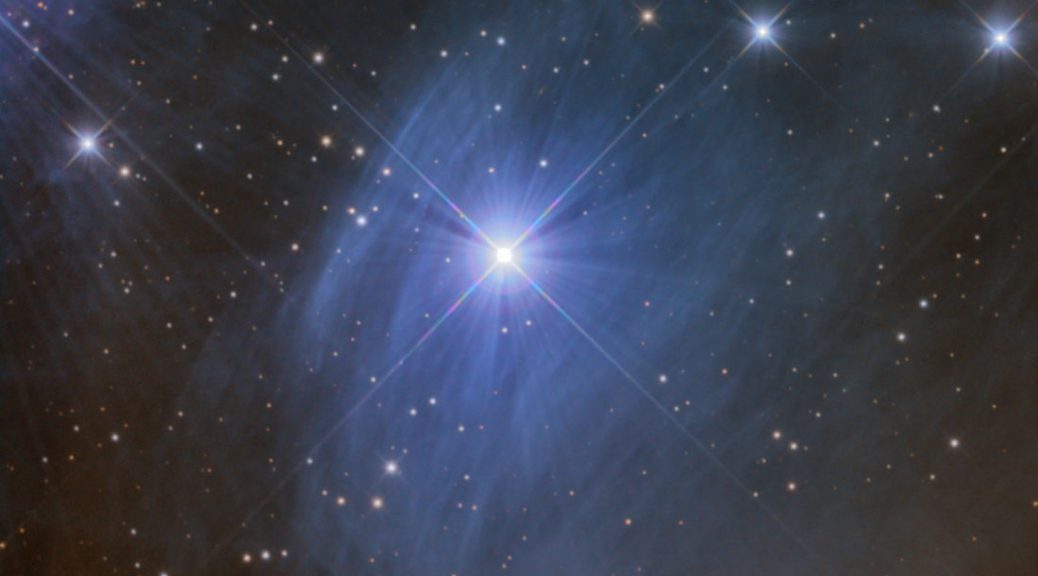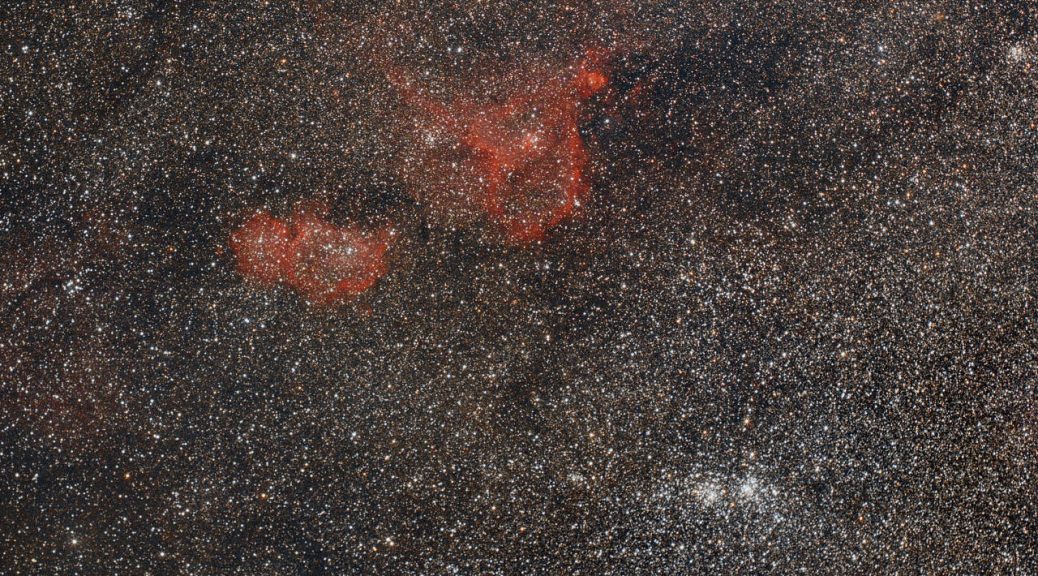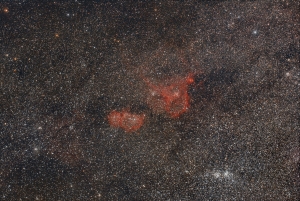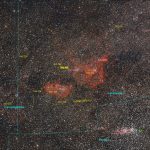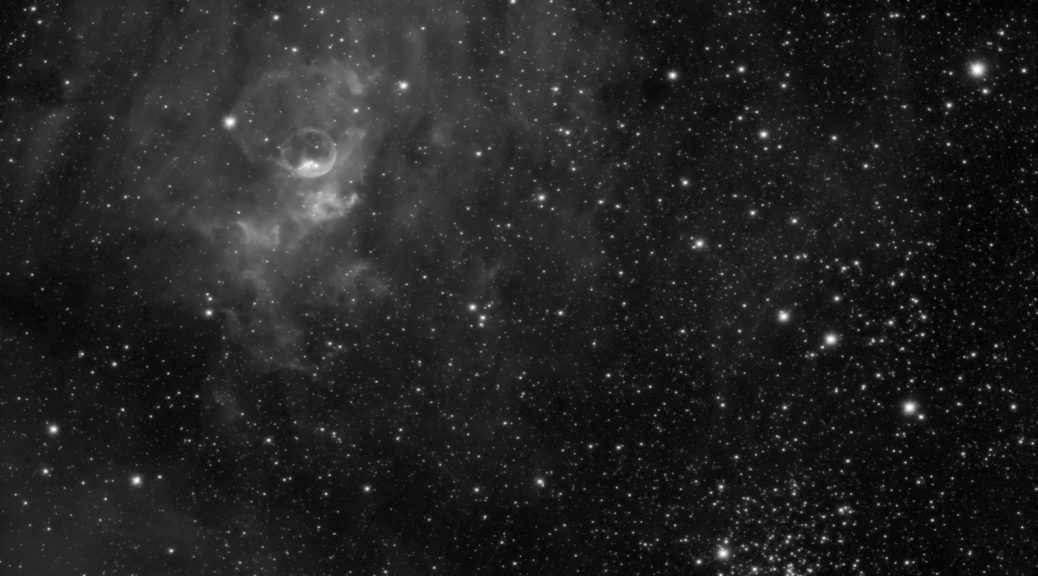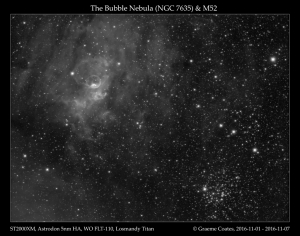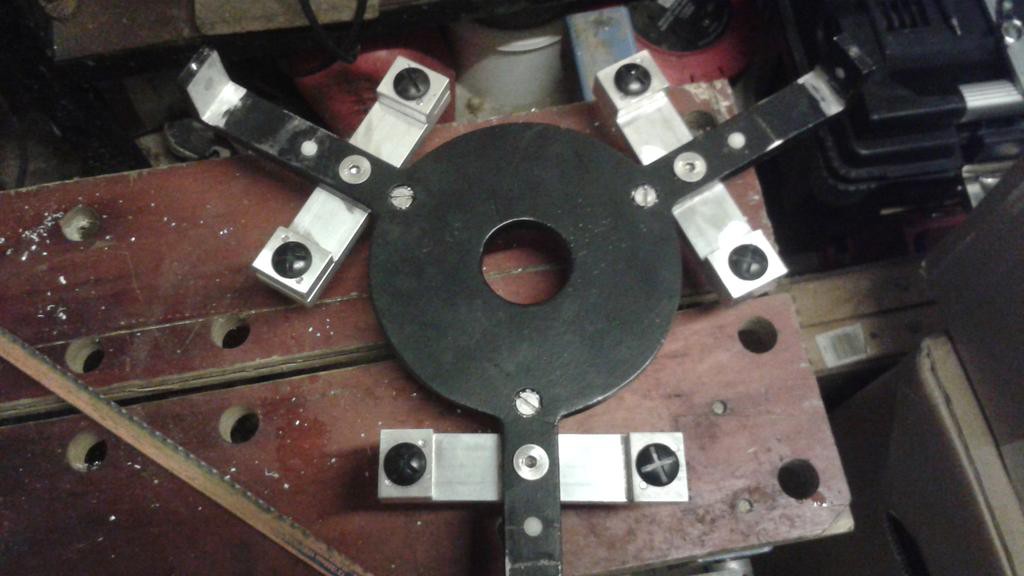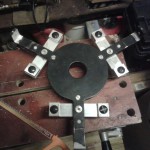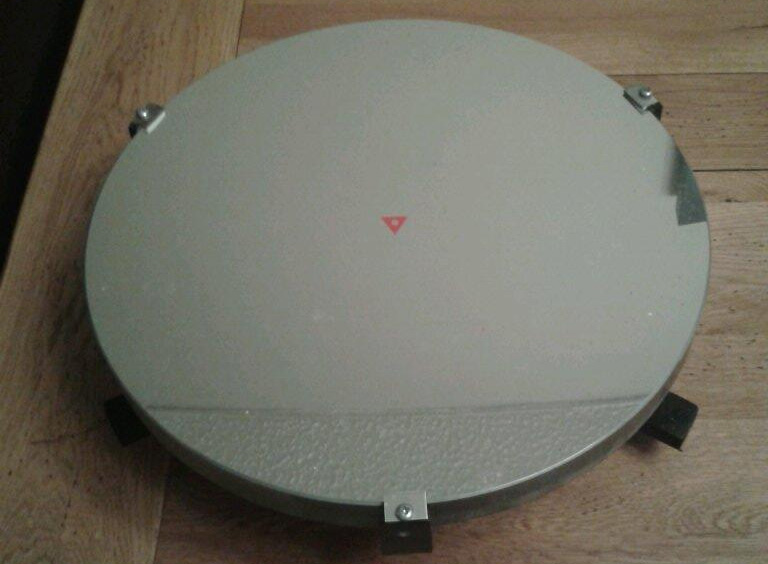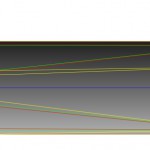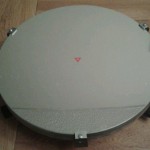Image centred at:
RA: 03° 46′ 18″
Dec: +23° 56′ 04″
Field of view: 25.46′ x 18.82′
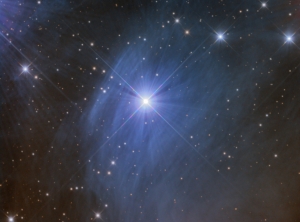 The Pleiades open cluster in Taurus is one of the brightest and most recognisable objects int he winter sky. As a first LRGB image using the 14″ Newtonian, and to test the setup of the off-axis guider, I imaged the area around Merope (23 Tau). This was also the first use of a Bahtinov mask that I got laser cut by Oxford Hackspace. The focusing mask works excellently – this should be a real plus, especially for any planetary/lunar work.
The Pleiades open cluster in Taurus is one of the brightest and most recognisable objects int he winter sky. As a first LRGB image using the 14″ Newtonian, and to test the setup of the off-axis guider, I imaged the area around Merope (23 Tau). This was also the first use of a Bahtinov mask that I got laser cut by Oxford Hackspace. The focusing mask works excellently – this should be a real plus, especially for any planetary/lunar work.
The particular area of nebulosity imaged here around Merope was discovered by Wilhelm Tempel on October 19th, 1859, and is catalogued as NGC1435. The dust isn’t in fact the nebula from which the cluster formed, rather that the Pleiades happen to be travelling through a particularly dense part of interstellar medium. This dust scatters blue light from the cluster members, resulting in the reflection nebula visible to us.
The image shows strong diffraction spikes from the secondary spider, as would be expected. There’s also further diffraction visible around the brightest stars dark shadowing present at 60 degree angles, which is the result of the mirror retaining “clips” (they are not actually clips – they are part of the cell in the case of the 9 point Orion Optics mirror cell). To remedy this would require a mask to be added over the outer edge of the mirror to cover these over – this is maybe something I’ll think about making in the future to help deal with tricky situations like this!
The additional dark shadow pointing to the right appears to be the focuser drawtube intruding on the internal light path inside the scope – that’s probably something that can only be cured by either a shorter drawtube, or shortening the truss tubes. Again. Maybe I’ll wait in case I decide to change coma corrector at some point, in which case it’ll probably need a change to the focal plane position anyway.
The image was taken on the evening of the 7th Jan 2018 through the 14″ (350mm) Newtonian, with an ST2000XM and an MPCC v1 coma corrector. Total exposure was “only” 2h 32m (L: 59m (20x1m, 13x3m), RGB: 31m (10x1m, 7x3m) each channel). Processing in Pixinsight and Photoshop CS4.
